© 2023 All Rights Reserved. Do not distribute or repurpose this work without written permission from the copyright holder(s).
Printed from https://www.damninteresting.com/the-ancient-order-of-bali/
In the 1970s, the Indonesian island of Bali went through a period of rapid change. Along the stunning beaches on the southern side of the island, tourism boomed. Parking lots were put up, together with swinging hot spots and hotels of various colours. Hip young travellers from North America, Europe, and Australasia had “discovered” the island and began exploring its awesome surfing breaks, drinking in the newly-built bars, and spending money. There were consequences, good and bad, for the Balinese people. Living standards increased—as did the island’s population. The rest of Indonesia experienced growth too, and the country soon needed more of a vital food staple: rice.
As developers paved paradise along the coast, in the hills and mountains of Bali’s interior the authorities implemented a program of policies dubbed Bimbingan Massal, or “Massive Guidance”, intended to increase rice production and modernise agriculture in line with the latest international thinking. Massive Guidance was a credit scheme funded by the Asian Development Bank, which strongly incentivised adoption of new Western-developed farming methods in the form of ‘technology packets’ containing fast growing and high-yielding rice varieties, artificial fertilisers, and pesticides. These innovations had already lifted millions out of poverty and hunger elsewhere in the world, as part of a global transition from traditional to high intensity farming practices—the so-called Green Revolution.
The authorities knew that Bali already boasted a remarkably bountiful landscape of traditional wet rice cultivation. Rice is semi-aquatic, and around 6,000 years ago, humans discovered that submerging the crops under several centimetres of water for large parts of the plant’s growing cycle kept weeds at bay, greatly improving production. But there was no reason—the experts figured—why Green Revolution methods couldn’t increase the island’s rice production yet further.
From 1970, the government urged Bali’s growers to dig deep into their new technology packets and repeatedly sow as much high-yield rice as possible as quickly as possible. For a few years, this approach bore rice. There were small but measurable increases in yields, sufficient to convince the authorities that the program showed promise, but maybe wasn’t quite massive enough.
In the middle of the decade, things started to go wrong. Plagues of insects and other pests attacked rice crops, often faster than the new pesticides could beat them back. And farmers in some areas experienced faltering irrigation flows and dry fields—something previously almost unknown on Bali’s verdant rice terraces.
In the midst of this emerging disaster, a young, long-haired anthropologist from America arrived on the island. When he realised the scale of the slow-motion catastrophe, he started asking some fundamental questions. Eventually, with the help of modern computing, he and his team of American and Balinese scientists would slowly reveal a never-before-seen organisation that had shaped the island for a thousand years—one which was now in danger of collapse.
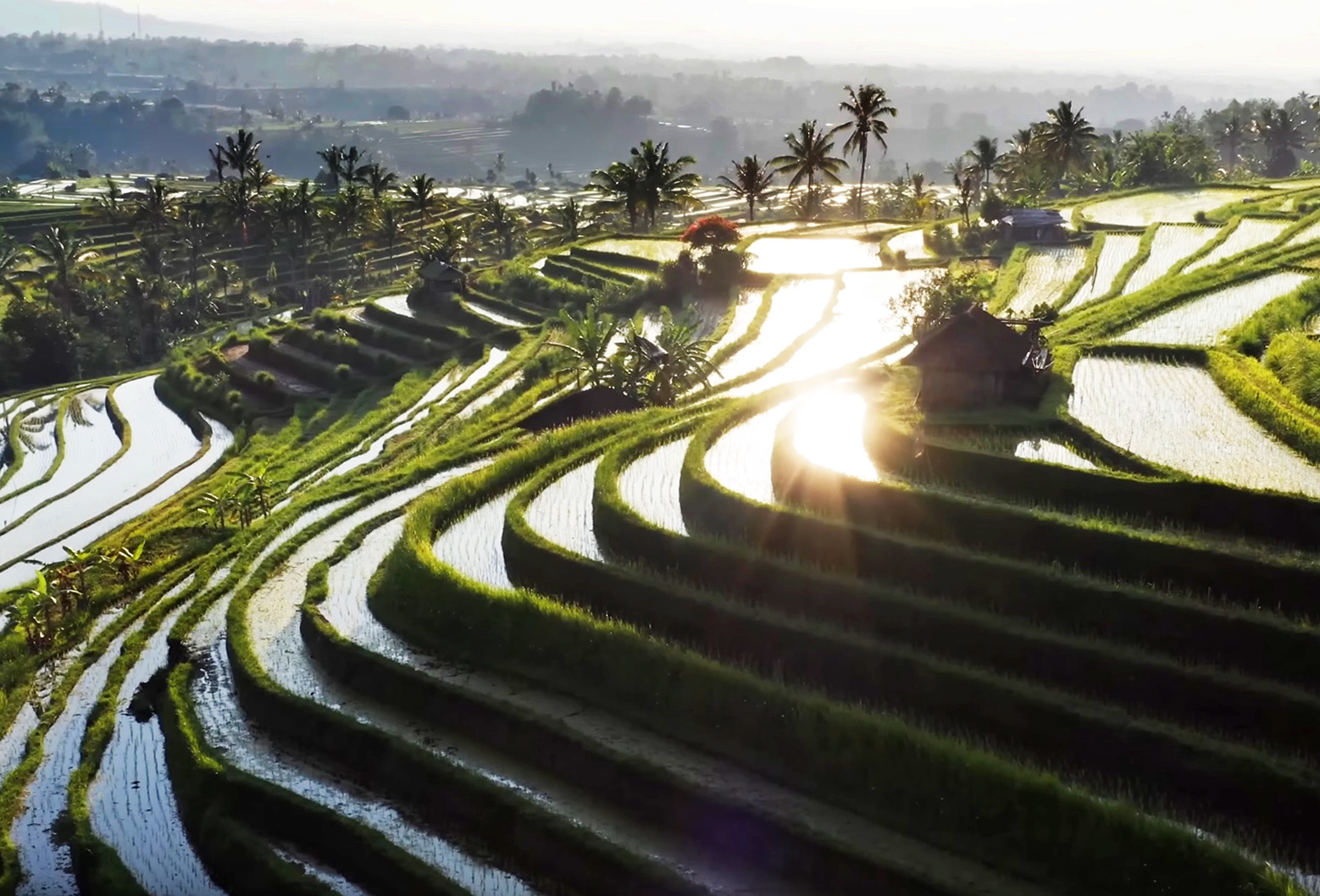
Long before the American arrived, Bali’s rural landscape had captivated travellers from distant shores. One such visitor, a British naturalist named Alfred Russel Wallace, arrived in northern Bali in June 1856, as part of an eight year-long exploration of the natural history of the region. Although his primary interest was the collection of biological specimens, Wallace found himself strangely attracted to Bali’s rice terraces. He later wrote:
The whole surface of the country is divided into irregular patches, following the undulations of the ground, from many acres to a few perches in extent, each of which is itself perfectly level, but stands a few inches or several feet above or below those adjacent to it. Every one of these patches can be flooded or drained at will by means of a system of ditches and small channels, into which are diverted the whole of the streams that descend from the mountains. Every patch now bore crops in various stages of growth, some almost ready for cutting, and all in the most flourishing condition and of the most exquisite green tints.
Wallace had seen plenty of rice fields and irrigation channels before. Yet these ones were somehow…different. Intricate, and efficient. A marvel of engineering. It was the middle of the dry season, yet the well-watered terraces were bursting with healthy crops. Somehow, Balinese farmers were able to provide their fields with the necessary water all through the year. Wallace later singled out Bali’s lush, productive landscape in his famous scientific travelogue, The Malay Archipelago, contrasting it favourably to the barren appearance of other islands during the dry season. The island’s elaborate rice irrigation network, Wallace noted, “produces the effect of a perpetual spring.”
But Wallace was only able to spend two days on the island before moving on to the next stop on his journey. Although his stay on the island was not long, it proved significant.
It was more than a century later when the American anthropologist J. Stephen Lansing arrived in Bali. His original interest was the island’s unique human history and religion. Within the vast multi-island nation of Indonesia, Bali is a largely Hindu community surrounded by Muslim-majority islands. Lansing first visited the island in 1971 as an undergraduate, living with a Hindu priest’s family for several months while studying Balinese language and culture. By the end of his visit, he knew two things for sure: that he wanted to be an anthropologist, and that he would be back. In 1974, he duly returned to Bali to undertake fieldwork for his doctoral dissertation. This time, he would be investigating the history of the many temples dotted around the island. The temples come in a variety of sizes and types, being dedicated to a wide range of different deities all considered, within the Balinese brand of Hindu theology, to be manifestations of the same supreme God.
Discovering the purpose and history behind these temples was not always easy for an outsider. To foreign eyes, they all look very similar, and unless visited on festival days—when the old buildings come alive with colour and celebration—many of them appear empty and abandoned. So Lansing relied on conversations with local people to unravel the buildings’ stories.
But whenever he came across one particular type of temple—namely the pura tirta, or water temples—these conversations veered off in an unexpected direction. Local farmers batted away questions about myths and rituals and suchlike, and started talking about rice: rice yields, rice pests, rice irrigation. And the farmers weren’t happy. Crops were failing and their livelihoods were under threat. Something was going wrong in their rice terraces, and it was somehow connected to the temples. Lansing knew that the government had recently started to impose Green Revolution changes on the island’s farmers—and an idea was germinating.
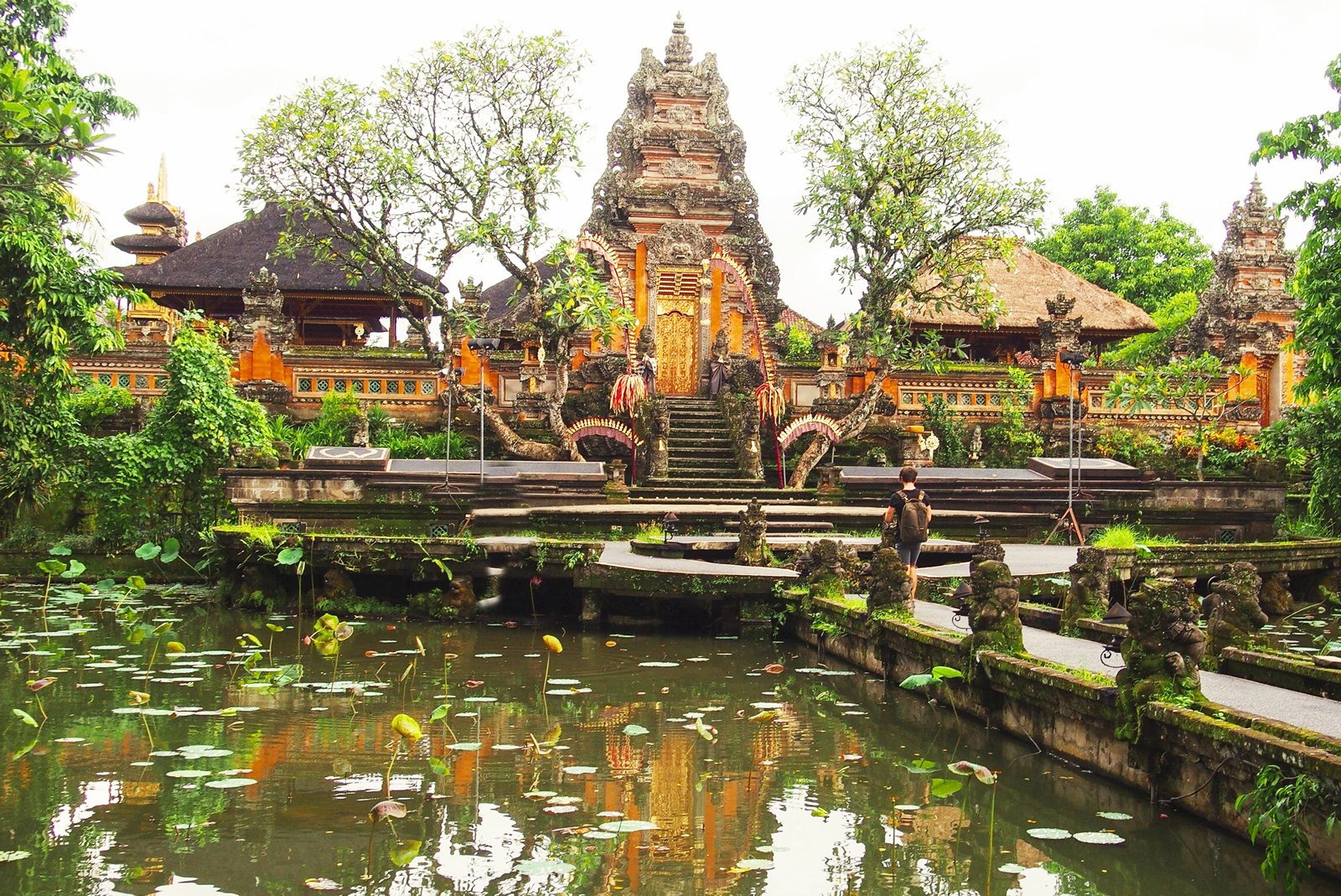
But he still had a dissertation to finish, and an anthropology research career to establish. It was not until nearly a decade later, in 1983—now working from the University of Southern California, and the proud recipient of a US National Science Foundation grant—that Lansing was at last ready to return to Bali to study the water temples, and their increasingly disgruntled farmer congregations.
It didn’t take him long to determine that his previous idea had growth potential. The water temples Lansing had discussed with exasperated farmers existed primarily to venerate the water goddess Dewi Danu, one of the most important deities of Balinese Hinduism. But Lansing realised they might also serve a practical function. Historically, and until very recently, the temples had been involved in setting irrigation and planting schedules for rice growers in their respective areas.
This dual role was possible because of the temples’ close association with a centuries-old Balinese rural institution known as a subak. Subaks are water management organisations comprising all the rice farmers in an area served by a shared water source—be that a spring, a lake, or water impounded by a weir across a stream. Subak members, typically numbering between 50 and 400 rice farmers, regularly meet to address issues of common interest—the foremost being, the fair division of water for their fields—and to pool their labour and resources to maintain the local irrigation network. In an otherwise hierarchical and caste-conscious society, subaks stand out as highly democratic and egalitarian organisations. An elected subak leader officiates in monthly meetings conducted using strictly caste-neutral language. All subak members have a say in proceedings, because all have a stake in the outcome of the subak’s shared decision-making.
The physical results of subak decisions are visible all across rural Bali. As Wallace had noted the previous century, the island’s landscape is a particularly elaborate example of terracing, a practice used worldwide to facilitate farming on steep hillsides. But on Bali, the dense mosaic of terraces is supported by large river-spanning weirs; kilometre-long tunnels hand-hewn through the walls of sheer-sided mountain gorges; precisely engineered wooden flow dividers allocating water between terraces; and flawlessly graded irrigation channels which, from certain angles, fool the eye into seeing an uphill flow.
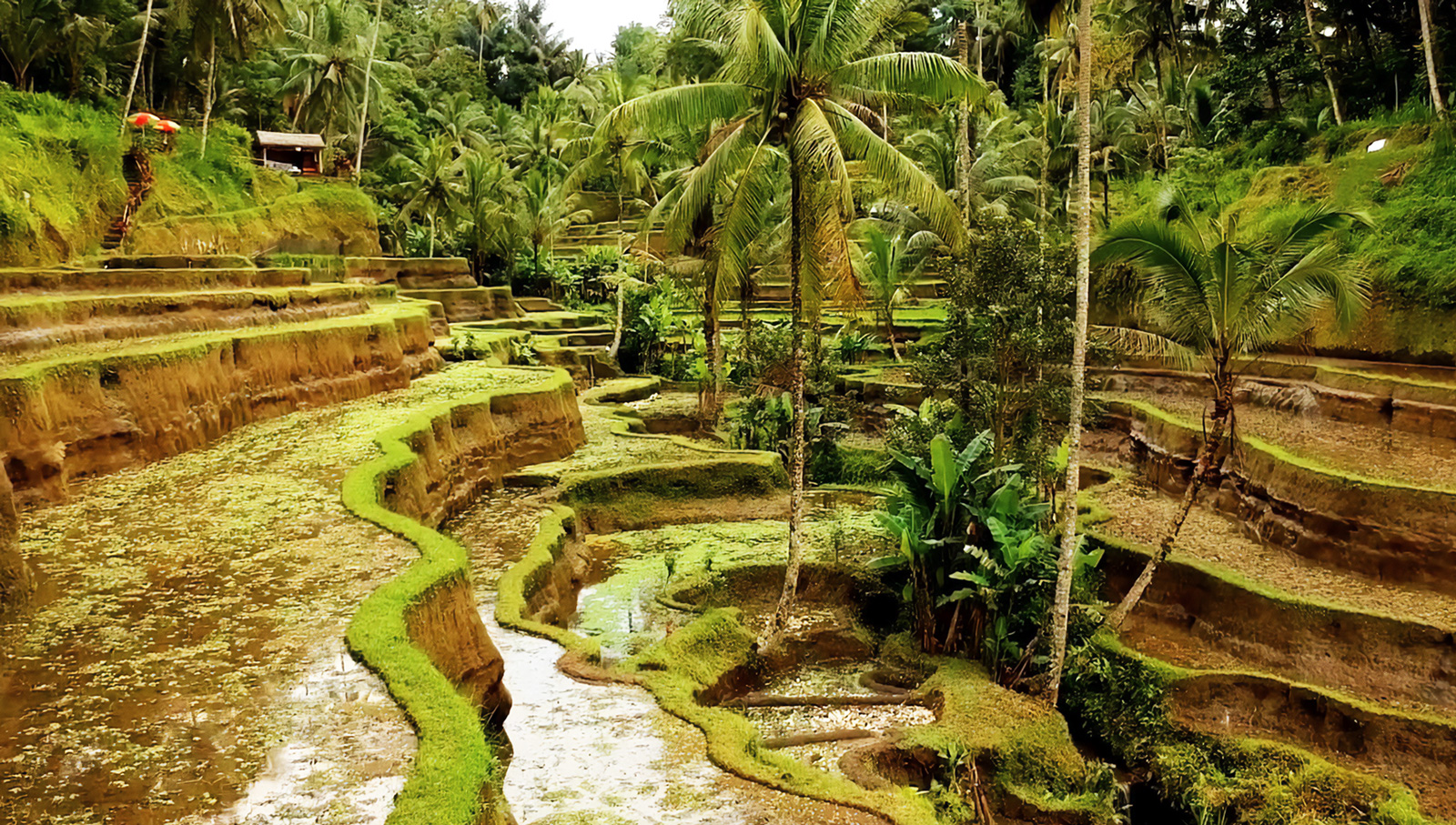
In a landscape so clearly sculpted by the practicalities of water distribution, the cultural importance of the water temples was not so surprising. But Lansing’s close-up study of individual subaks allowed him to recognise that subak boundaries and membership correspond precisely to the areas and congregations served by each local water temple. Each water temple was located close to the local subak’s water source, and subak meetings were held in the temple courtyards. In these meetings, priests and farmers saw no distinction between the spiritual and practical aspects of water management. Ultimately, all water belongs to Dewi Danu, and fair allocation of her aqueous blessings is viewed as a form of worship, symbolised by the distribution of tirtha, or holy water. Lansing also identified a separate tier of larger supra-local regional water temples similarly co-located with upstream water sources, which hosted regular regional meetings of subak leaders. In this way, subak decision-making at all levels was imbued with the Highest of All Possible Authorities. As a Balinese saying puts it, “the voice of the subak is the voice of God.”
But times were a’changin, and not for the better. Although the religious life of the water temples continued, Lansing saw how Massive Guidance had wrenched apart the spiritual and the practical aspects of water management. The authorities distributed technology packets containing high yield rice seed to farmers free of charge. Payment would be deducted at harvest time when growers sold their crops back to the government—but if farmers wanted to take full advantage of the new fast-growing varieties, they needed to produce three crops a year. The temples had never scheduled more than two crops a year, with a cleansing post-harvest fallow period of several weeks between reaping and sowing. With the soil pressed into year-round service, regular application of artificial fertilisers became necessary—and the plants were much thirstier.
The priests carried on with their rituals, but responsibility for setting planting schedules returned to individual rice growers. The government encouraged each grower to throw open their irrigation channels and flood their fields with as much water as their crops required, as often as required. It was every farmer for himself. The government did not consider water supply to be a problem, because there had never been significant water shortages on the island before. And if necessary, technology would make up any shortfall, in the form of gleaming new irrigation infrastructure—including modern metal sluice gates and large machine-built dams and canals.
And so the Green Revolution rolled over the island. Starting from 1970, rice growers gradually abandoned the old ways and adopted the new. This didn’t mean they were happy with the changes. Officials discovered that in some areas the recently installed metal sluice gates had, unaccountably, been raised out of the water and left to rust. As the farmers—wide-eyed with innocence—explained to the bureaucrats, this necessitated going back to the old wooden fractional dividers. Despite such outbreaks of plausibly-deniable sabotage, overall and over time a significant proportion of rice growers did change their practices. Government pressure to use the new methods was intense. At one point, temple-based irrigation scheduling was outlawed. Accordingly, the complex interrelationships between rice plants, pests, and people shifted.
Then, from the mid 1970s, a torrent of disasters struck at Bali’s rural heart. It was almost as if the Gods were angry—or perhaps one Goddess in particular. Abrupt explosions of rice pests afflicted crops, including rats and other rodents, insects, and rice-consuming pathogens of all kinds. In 1977, the island lost hundreds of thousands of tons of high yield rice to a notorious species of insect pest named the brown planthopper. Agronomists developed new planthopper-resistant rice varieties, and the situation stabilised for a time—but in 1983 the island’s rice crops suffered a devastating outbreak of the disease tungro. So the farmers planted new tungro-resistant rice, only for their fields to be afflicted by rice blast, which led to them planting even newer and more disease-resistant rice varieties which, it soon transpired, were susceptible to helminthosporium. Between deployments of new rice varieties, government and development agency advisors encouraged farmers to reach ever deeper into their technology packets and apply pesticides in escalating doses. In this way, Balinese farmers found themselves caught up in a spiralling pest-versus-people biochemical arms race. By the mid-1980s, aircraft were spraying vast quantities of pesticides over Bali’s rice terraces.

Meanwhile, the island’s coastal ecosystems were hit by an unexpected plague of green slime. Much of the nitrogen and phosphate fertiliser from farmers’ technology packets had found its way to the sea. This resulted in destructive green algal growth smothering the island’s prized coastal coral reefs, in turn threatening the island’s fishing and tourism industries. Frustratingly, this eutrophication happened despite research showing that the fertile, mineral-rich volcanic soils of the island should have rendered such artificial supplementation superfluous—at least if traditional rice varieties, with their modest growth rates, had remained in widespread use.
And in case there was any doubt which deity might be connected with these events, the previously reliable delivery of water from the island’s irrigation network began to falter. Farmers could no longer be sure of receiving the necessary volumes of water for their crops at the required times. When the Asian Development Bank sent its representatives into rural Bali to assess the progress of the Green Revolution, the reports landing back on the desks of the bank’s executives described “chaos” in the formerly impeccable irrigation system.
In short, Massive Guidance ran into massive problems. One analysis showed that despite the rapid-fire changes and millions of dollars of investment poured into the island’s agricultural system, in the four years leading up to 1978, Bali’s average per hectare rice yield increased by a measly 2%—at the cost of significant environmental and social disruption. And thanks to the increased energy inputs into the system—much of it embedded in the production of fertilisers and pesticides—Balinese rice farming was no longer the model of efficiency so admired by earlier generations of visitors.
In Lansing’s anthropological opinion, these problems were due to the incompatibility of modern Green Revolution methods with the island’s traditional subak system. He repeatedly tried to warn the authorities that their policies risked lasting damage to Bali’s culture, agriculture, and environment. But to no avail. The opinion of one long-haired Californian academic carried as little weight as the protests of the farmers themselves. The authorities pointed towards the success of the Green Revolution elsewhere, and asserted that the underlying problem—if indeed there was one—was not enough Green Revolution.
Despite such setbacks, there was still science to be done. As Lansing mulled over what he had learned, he began to suspect that the implications extended beyond the problems of Balinese rice farmers and into something more fundamental. Specifically, the study of systems. Lansing’s academic background meant that he was singularly well-placed to investigate these implications. As an undergraduate, he had read voraciously across the physical sciences, the social sciences, and the humanities. On entering college, his intention was to major in physics. However, his life-changing six months with the priest’s family in Bali turned his career in a different direction. And now, something about Bali’s traditional irrigation practices stirred his dormant mathematical instincts. Massive Guidance was causing the traditional irrigation system to break down, with unforeseen and unfortunate consequences—but why had the old system functioned so well in the first place?
At this point Lansing realised he needed more data, and he needed help. In 1986, after several years based mostly in Bali, he returned to the US and secured the assistance of a marine biologist and systems ecologist named James Kremer. Kremer had experience with a cutting-edge analytical technique known as “computer simulation modelling.” Although the two academics did not know each other well, both held faculty positions at the University of Southern California, and both were aspiring surfers. Kremer invited Lansing to his local beach in Redondo, near Los Angeles, and it was there—as the waxed-up researchers bobbed gently in a lull between waves—that the two first discussed the gnarly problem of Bali’s rice paddies. Initially, Kremer wasn’t sure how he could help. Fortunately the surf that day wasn’t big enough to interrupt the necessary explanations, and despite some ongoing qualms from Kremer, both men were soon heading to Indonesia.
Back in Bali, Lansing had already forged links with local scientists, including a senior researcher at the Ministry of Agriculture, Wayan Alit Arthawiguna, and a conservation biologist named Sang Putu Kaler Sura. Their deep understanding of the local environment and culture proved invaluable in the months and years that followed. Lansing had widened his attention to larger groups of subaks spanning entire watersheds, and the team had conducted field surveys, videotaped subak meetings, and collected local agricultural and environmental data. Over time, more academic contacts and colleagues were pulled into the project to help answer a snowballing array of rice cultivation and water temple-related questions. Ultimately a large, constantly morphing team of mostly Balinese and American researchers—including biologists, computer scientists, economists, historians, and archaeologists—pieced together a comprehensive picture of the island’s traditional water temple-subak system, and how it had come to be.
Kremer’s background in computer simulation modelling proved to be crucial for the investigation. But when Lansing first showed his biologist colleague around the island’s rice terraces and water temples, Kremer remained unsure how he could help. His expertise was in systems ecology, a broad-based yet mathematics-heavy discipline that spans the interface between biology, chemistry, and physics. His particular interest was marine ecosystems—but Lansing was insisting on showing him an unlikely mix of land-based Balinese culture, religion, and agronomy.
As he considered subak practices in more detail, however, Kremer was struck by the ecological relevance of what he saw: the benefits of repeated flooding, fallow periods, and the harvesting of eels and small fish from rice paddies for food, contrasting with the negative impacts from the new short, fast-growing, and thirsty rice varieties that were replacing the traditional tall, slow-growing and pest-tolerant types, and the associated increase in fertiliser use. He realised that the rice planting schedules traditionally set by the water temples could be linked to other parameters, such as rainfall and rice yields, and their relationships described mathematically using differential equations—in the same way he might have connected fluctuations in microscopic algae levels to the numbers of grazing zooplankton in the more familiar setting of a coastal marine ecosystem. Perhaps he could contribute something useful after all. By the end of his first visit to Bali, Kremer was ready to switch on his Macintosh personal computer and start inputting data. The ecologist had a model to build.
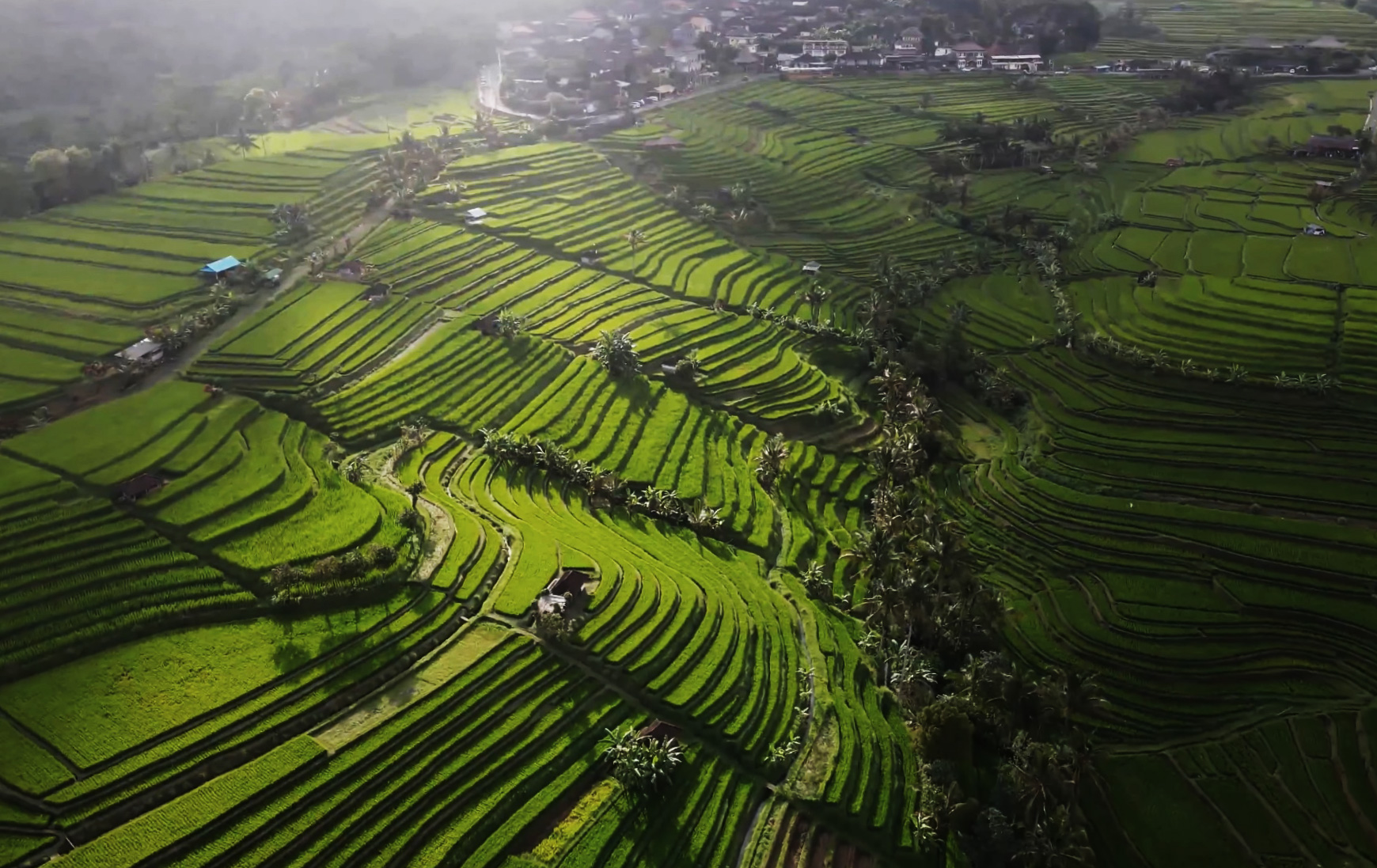
While Kremer looked at the overarching ecosystem implications of subak practices, other collaborators helped unpack smaller scale dynamics within the system. In particular, the team’s understanding of what happened at individual farmer level was enriched by later input from an economist named John Miller. Miller realised that the allocation of water within a subak could be described by a branch of mathematics known as game theory.
The team in Bali had already observed that neighbouring upstream and downstream farmers cooperated closely when it came to sharing out irrigation water. But in theory, upstream farmers held all the cards by being able to control irrigation flows for the benefit of their own crops. At first glance, there was no obvious reason for upstream farmers to coordinate with water-limited farmers lower down the mountains. But—as local biologists and the farmers themselves could attest—upstream farmers actually had a powerful incentive to cooperate: pest control. When farmers synchronised planting and harvesting over contiguous areas of hillside, the simultaneous flooding of their fields during the post-harvest fallow period provided a key pest control function. Pest species—such as the cereally-offending brown planthopper—found themselves starved of food across an unhoppably wide and riceless expanse of flooded land. Their populations would plummet. But when different farmers offset their cropping cycles by planting in a piecemeal and uncoordinated way, the landscape became a fine-grained patchwork of fields at different stages of growth and inundation. This patchwork was a haven for rice pests and pathogens of all kinds. Pests—unlike water—can move uphill almost as easily as down, and can quickly shift their attention to patches of juicy new growth. After a few short growing seasons, this unsynchronised planting produced explosions of pest populations—as Massive Guidance demonstrated so effectively—while conversely, the traditional practice of synchronised cropping kept pests under control.
But synchronised cropping also meant synchronous demand for large volumes of water in the same areas during the growth and fallow phases of rice cultivation. These sharp spikes in demand had the potential to cause water shortages for downstream growers.
Game theory provided a framework to analyse and understand the trade-offs required to resolve the dilemma. For the upstream farmer, planting would ideally be synchronised as much as possible for maximum control of pests—when water supply was not an issue. But the downstream farmer had to balance both pest control and water requirements, treading a much finer line. Miller’s game theory analysis showed that for many scenarios, the combined harvests of both downstream and upstream farmers would be larger if they negotiated a shared irrigation strategy—either aligning their planting schedules or not, depending on pest levels and water availability. In terms of overall harvest size, this worked far better than each farmer making individual planting decisions, and it often held true even if the upstream farmer incurred a short term harvest penalty. In the long run, upstream farmers benefited from releasing some of ‘their’ water so that those downstream could synchronise their planting to keep rice pests firmly in their place—at least to the extent that the capacity of their shared water supply permitted. They just needed a coordinating mechanism—which, the team already knew, was provided by the regular subak meetings hosted by the local water temples.
But what was happening at larger scales? In fact, thanks to James Kremer, the team already knew the answer: exactly the same thing.
In 1988 Kremer completed his computer simulation model, ‘BaliMod.’ It was a remarkable achievement, successfully capturing the functional relationships of 32 key environmental and agricultural parameters—including rainfall, irrigation flow, rice type and pest levels—affecting 172 digitised subaks strung along two Balinese rivers. Although the model’s wide angle view couldn’t address the rationale behind individual farmer decisions in the same way as Miller’s later game theory analysis, simulations run from the model showed subaks controlling pests, minimising water shortages, and maximising harvests in precisely the same way.

And BaliMod showed this happening across the entire simulated rice-growing landscape. Within the no-consequence confines of the model, the researchers could vary the extent of synchronised planting and call down drought or floods at will, to see how the system was affected over the course of a year. Sure enough, they found that when cropping schedules were patchy and poorly coordinated across a watershed, pests ran riot and harvests were significantly reduced; an effect that was most pronounced when high yield rice varieties were planted. When the amount of inter-subak synchronised cropping in the model was dialled up, pest levels fell and rice harvests improved—but when it reached a certain threshold the pest control benefit was counteracted by a marked increase in water stress. This was caused by the corresponding increase in watershed-spanning spikes of simultaneous water demand that occurred as rice cropping schedules aligned. At this point, the physical infrastructure of the irrigation system could no longer meet peak water requirements. Increasing synchronisation further only resulted in parched and less productive—albeit largely pest-free—rice crops. The researchers found that the intermediate range of synchronisation between these two extremes reliably produced bountiful harvests that were remarkably tolerant of environmental fluctuations. And when the team mapped model outputs onto diagrams of watersheds marked with water temple locations, another fact jumped out: this synchronisation sweet spot occurred at the scale of coordination overseen by the larger, supra-local regional water temples.
Lansing’s anthropological research showed how this regional coordination worked at the human level. The regular meetings of subak leaders hosted by the regional temples allowed information on water allocations and planting schedules to “flow uphill”—and then, back downhill when the subak leaders returned to their own temples and passed on other subaks’ decisions to their members—alongside, of course, tirtha to indicate Dewi Danu’s approval. Water temples thus functioned as conduits for information exchange at both local and regional scales, allowing farmers’ planting schedules to coordinate at multiple levels across the whole watershed-wide network.
Lansing later realised that both types of analysis—game theory and computer simulation model—show that the Balinese subak system approaches a point of maximum theoretical efficiency known in mathematics and economics as ‘Pareto Optimality’, or ‘Pareto Efficiency’. Pareto optimality describes a situation where no change can be made to a system that would make someone better off, without making at least one other person worse off. It is generally considered to be an idealised, abstract state. Economists find it useful as a theoretical construct, but don’t expect to see Pareto-optimal systems operating in the real world. Yet the researchers’ findings suggested that the original Balinese subak system came remarkably close to achieving Pareto optimality.
When Lansing’s team looked at rice harvest data across the whole expanse of a watershed—in both real and simulated Bali—they noticed that regardless of whether they were located upstream or downstream, cooperating farmers achieved very similar rice yields at harvest time. While economists are keen to point out that there is nothing intrinsically fair or equal about Pareto-efficient systems—the efficiency relates to the productivity of the whole system, not the equal allocation of resources to participants—in practice, Bali’s subak system reliably generates similar-sized harvests for all participating farmers. This meant that growers were free from the insidious effect of rice harvest envy—which was important in a system that depended so heavily on cooperation.
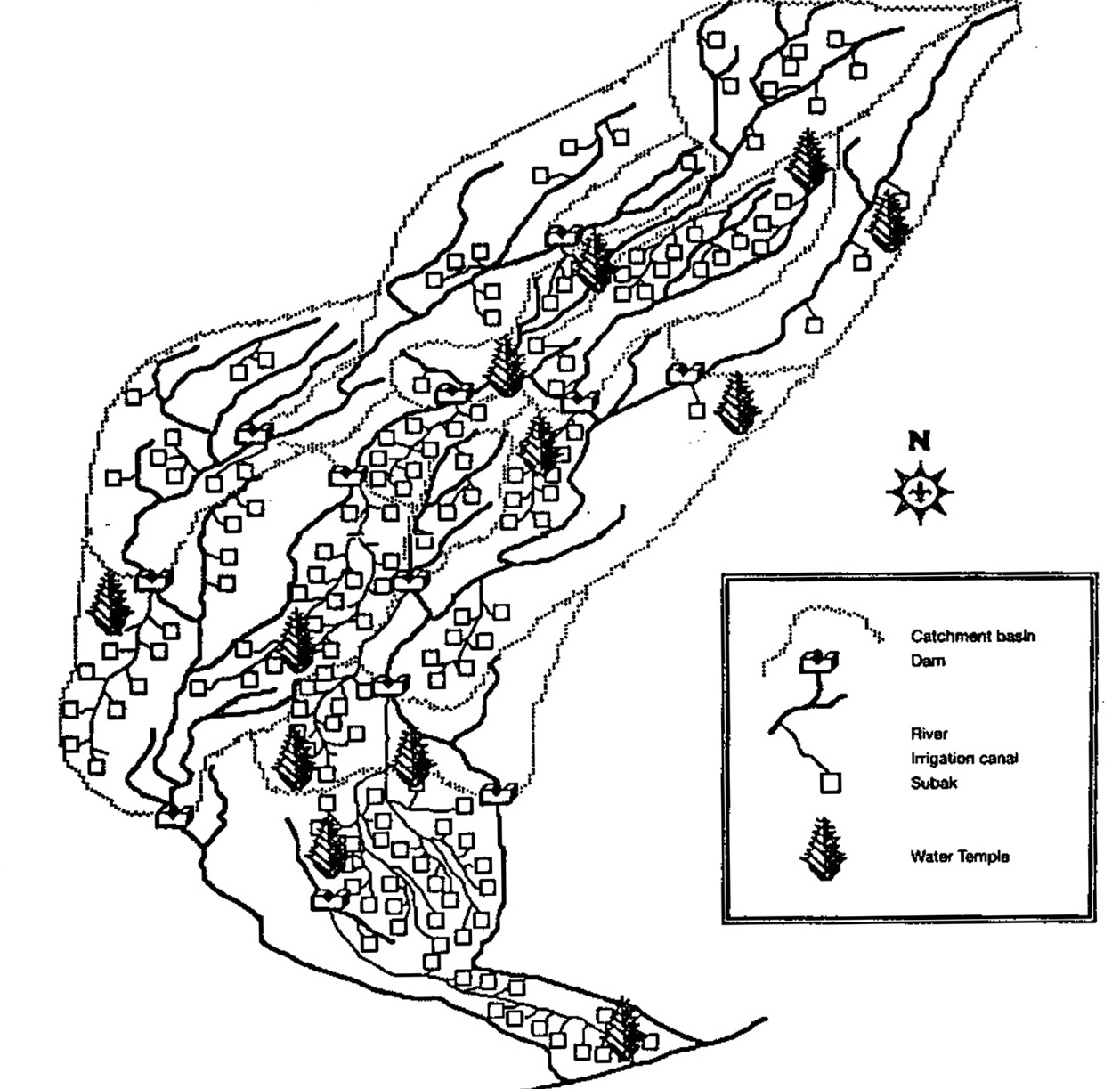
Kremer’s computer simulation model was compelling. After an appropriate period of testing, the team judged they had the evidence they needed. Later in 1988, in a large meeting room in the main government Irrigation Office in Denpasar, the capital of Bali, Lansing and Kremer presented BaliMod to a gathering of rapt Indonesian officials and water engineers. The model was built with three language settings—English, Indonesian, and Balinese—and boasted a state-of-the-art graphical user interface based on ‘HyperCard’ software, a precursor of twenty-first century web browsers. Blocky pixelated pagodas represented the temples, while jagged lines traced out branching rivers, irrigation channels and watersheds. Using dropdown boxes, users could change the values of significant parameters such as rainfall and pest levels, and run their simulations.
After a lengthy session—Kremer demonstrating, Lansing translating—the researchers paused to take questions. It turned out that the Indonesian irrigation engineers were working on a project to establish shared cropping across subak areas, but were finding it impossible to accurately measure water needs by looking at individual subaks. When they realised that all the subaks in a watershed functioned within a single connected network, this suddenly made sense. Ultimately, they understood that there was no need for a government department to negotiate cropping patterns and manage water flows on a subak-by-subak basis, because the system was already self-regulating.
As the implications of Lansing and Kremer’s demonstration sunk in, something shifted and clicked in the depths of Indonesian bureaucracy. This time, it was no longer one lone American anthropologist repeating the same old line about traditional irrigation practices being better than modern agricultural methods. Now Lansing had a theory, plausible mechanisms, and hard observational data—not to mention support from a growing group of both Balinese and foreign scientists, and a shiny new computer model. This time, it was enough.
The irrigation officials asserted that the Public Works Department, the Agriculture Department, and the local tax office needed computers, presumably to help them understand the model’s implications on their respective spheres of influence. They were less convinced by Lansing’s suggestion that farmers and water temple priests themselves might find the model helpful or interesting. Nonetheless, the presentation left the authorities with much to think about.
The slopes of Mount Batur, one of Bali’s two active volcanoes, are cloaked with massed tiers of lush rice paddies and studded with shrines and temples dedicated to the goddess Dewi Danu. But the mountain’s significance for rice farmers extends beyond these slopes, and all across the island. Inside the volcano’s caldera, 1000 metres above sea level, is a crater lake—Lake Batur—and above this, on the crater rim, is Bali’s supreme water temple: Pura Ulun Danu Batur. The temple site comprises a complex of walled compounds and pagodas, and is one of the island’s most important religious sites. It is the literal and symbolic pinnacle of the water temple system. Every year during the rainy season, at a time dictated by the rising of the Pleiades constellation in the night sky, local farmers and water temple priests undertake a pilgrimage to the temple to make offerings and receive tirtha from the ever-watchful water goddess. According to local mythology, Dewi Danu herself dwells in the usually placid waters inside the caldera, as Bali’s very own Lady of the Lake.
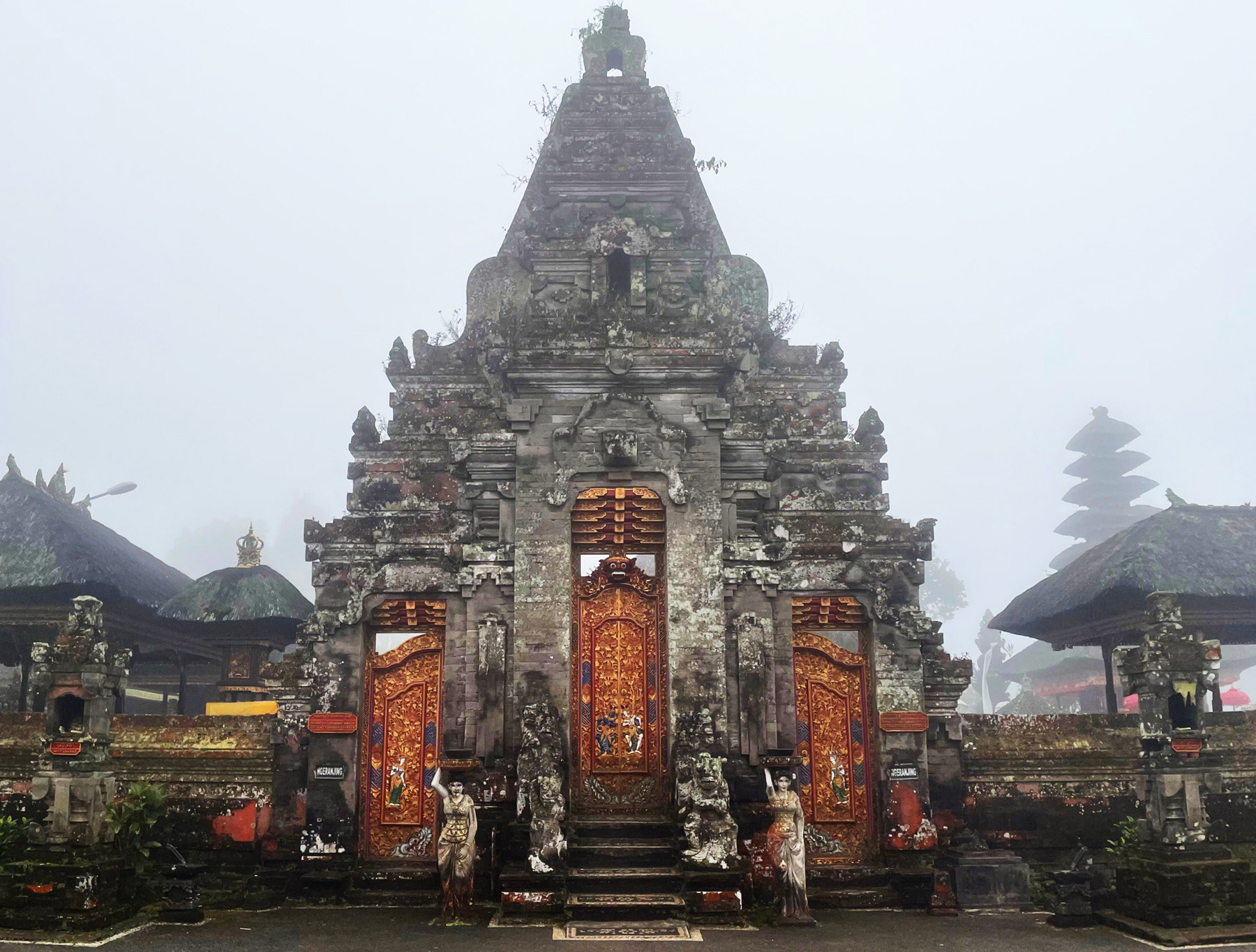
A few days after their presentation at the Irrigation Office, and despite government scepticism regarding priestly interest in their computer model, Lansing and Kremer lugged a bulky beige carry case to the temple at the top of the volcano. When they arrived at the temple they were met by a cluster of temple priests, including the Jero Gde, the high priest. The visitors removed their shoes and sat cross-legged under the eaves of an open-walled pagoda while they explained their intentions. Inside the case was a keyboard, mouse, and boxy base unit with integrated cathode ray tube display—a Macintosh SE personal computer.
Lansing and Kremer had not mentioned their intended volcano visit to the Denpasar authorities. But the idea of presenting BaliMod to the government bureaucrats without also showing it to the water temple priests and farmers was unthinkable. It was their irrigation system, after all. But before the researchers had time to set up the equipment and begin their demonstration, more visitors arrived. Somewhat awkwardly, they comprised a small group of government officials.
If any embarrassment ensued from this potentially tense situation, it was quickly smoothed over. Despite their initial misgivings, the bureaucrats in the Irrigation Office had independently concluded that a discussion about BaliMod with the water temple priesthood might be beneficial for all concerned, after all. Unsanctioned though it was, the presence of the American researchers turned out to be a happy coincidence, as it provided an opportunity for everyone to see and discuss BaliMod, and its implications, together.
After the demonstration, someone asked the Jero Gde if he thought the model might be useful to the Balinese priests and rice growers. It was a loaded question, and one that Kremer—not wanting to unduly influence the people at the centre of the system he was studying—had so far been careful to avoid. The Jero Gde did not answer immediately. He looked away from the gathering, as if to collect his thoughts. Then he replied, “Yes, this could be useful for showing farmers how their subak is part of a larger network. It will help them see how everything works together.”
Not long afterwards, the Indonesian authorities started the process of selectively reversing their agricultural policies of the previous decade. To the farmers’ great relief, they allowed water temples to coordinate rice planting and irrigation schedules once again. Now the question was how long it would take the system to recover—or if it would at all.
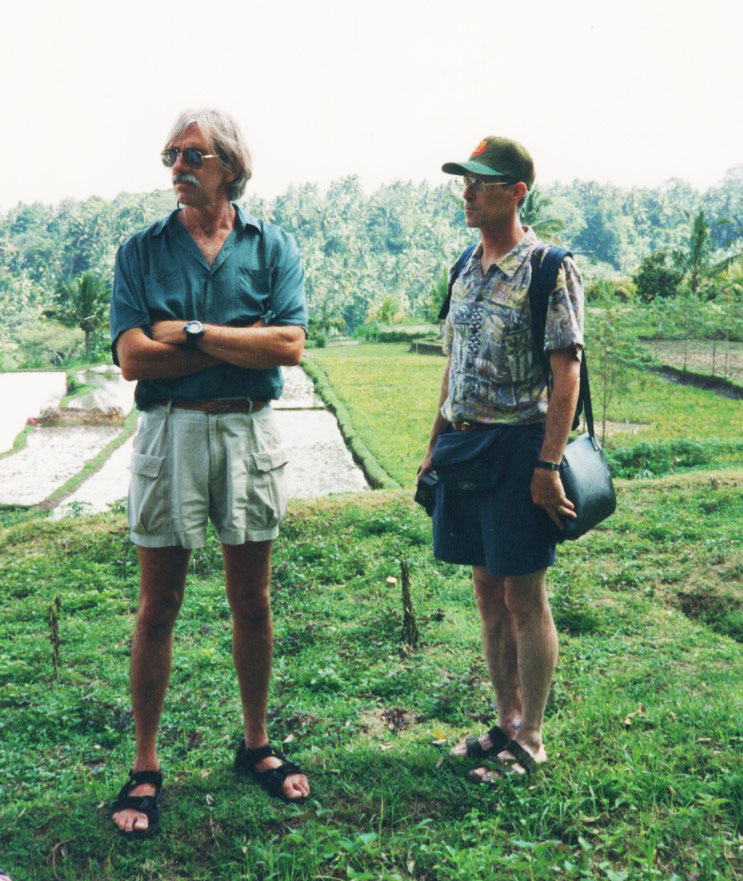
Meanwhile, Lansing restlessly probed the ramifications of what was now known, in the academic literature, as the Lansing-Kremer model of Balinese irrigation. After presenting the team’s findings in a lecture at the Santa Fe Institute in New Mexico in 1992, a question from an audience member got the no-longer-quite-so-young anthropologist thinking. The question was about whether the Balinese subak system displayed a property known as emergence. In systems science, emergence is the phenomenon that occurs when a system starts to display features that its individual components do not display on their own; for example, a single termite is mostly harmless and ineffectual, but a colony of termites can build vast, complex mounds with ventilation and cooling structures. In other words, emergence is what happens when a whole becomes greater than the sum of its parts.
This, Lansing decided, was an interesting question—and one he could investigate by going back to BaliMod. He designed his own simulation experiment that tweaked the model, and the method of its execution, in several important ways. Rather than use realistic starting values for the model parameters, he would begin with completely random initial cropping patterns. Then, after the first year, he would let each subak decide its own cropping schedule for the next growing season using a simple decision rule: to adopt the rice planting strategy of the most successful of their four closest neighbours. If a subak’s own harvest was better than any of its neighbours, it would retain its current cropping schedule for the next year. He would then run the simulation for multiple consecutive seasons, and monitor the outcome over time. When Lansing discussed the idea with Kremer, his friend was cautious. Both men considered it likely that the simulation would result in an indefinite chaos of disorganised and inefficient rice production, with subaks flipping crazily from one cropping pattern to another.
But it was order, not chaos, that emerged across the grid of simulated subaks. After wild initial oscillations pest levels, irrigation flows and harvests stabilised relatively quickly—in as few as ten growing seasons, or five computer years of traditional Balinese double rice cropping. And the patterns re-emerged no matter how vigorously the researchers varied the starting conditions. In fact, using this type of numerical analysis—an aptly named hill climbing algorithm—it was almost impossible not to grow a stable water temple-subak network. Although real world subak planting decisions were undoubtedly more complex than the simple approximation used in the hill climbing analysis, there was no reason to suppose that the fundamental dynamics were any different. After all, the results remained consistent with observed patterns of rice cultivation on Bali.
Now, looking across whole watersheds and multiple growing seasons, the researchers could see patches of synchronised and unsynchronised rice cultivation flip and roil across the hills in response to shifting conditions, like murmurations of starlings or shoals of fish recoiling from a predator. They saw a dynamic system capable of adapting to changes in the environment, while continuing to deliver optimal harvests. And they saw a system that was not just self-regulating, but self-organising. It was as if the hills were alive with the sound of subaks.
Pulling everything together, Lansing arrived at a startling conclusion. He proposed that Bali’s thousand-year old irrigation and rice cultivation network forms a phenomenon known to systems scientists as a complex adaptive system. Such entities comprise multiple interacting, purposeful agents that follow simple rules, yet spontaneously organise into complex, self-sustaining systems exhibiting features independent of their constituent agents—in other words, they exhibit the emergence much studied and discussed at the Santa Fe Institute in New Mexico. Such systems are mathematically self-similar, in that they function in the same way at different scales, and their underlying dynamics are non-linear, so that a small butterfly-like change to an input (for example, diverting a small proportion of irrigation flow from one set of rice terraces to another) has the potential to result in a disproportionately hurricane-esque output (for example, a cascade of altered cropping patterns further down the watershed). But as their name suggests, such systems grow and respond to changes in their environment in a coordinated way to maintain their structure, function, and identity. Although the underlying dynamics may be chaotic, these adaptive responses are usually sufficient to keep the system within a constantly shifting but predictable range of potential states known in nonlinear dynamics as a strange attractor.
The theoretical framework underlying complex adaptive systems, often termed ‘complexity science’, is relatively well established in the physical and biological sciences. Individual cells and organisms, power grids, brains, immune systems, social insect colonies, and the internet have all been described in these terms. But complexity theory is less recognised in the social sciences, and scientists and academics have not always been comfortable with the underlying principles. One well-known biologist, writing in 1995, opined, “I have a general feeling of unease when contemplating complex systems dynamics. Its devotees are practising fact-free science. A fact for them is, at best, the outcome of a computer simulation; it is rarely a fact about the world.”
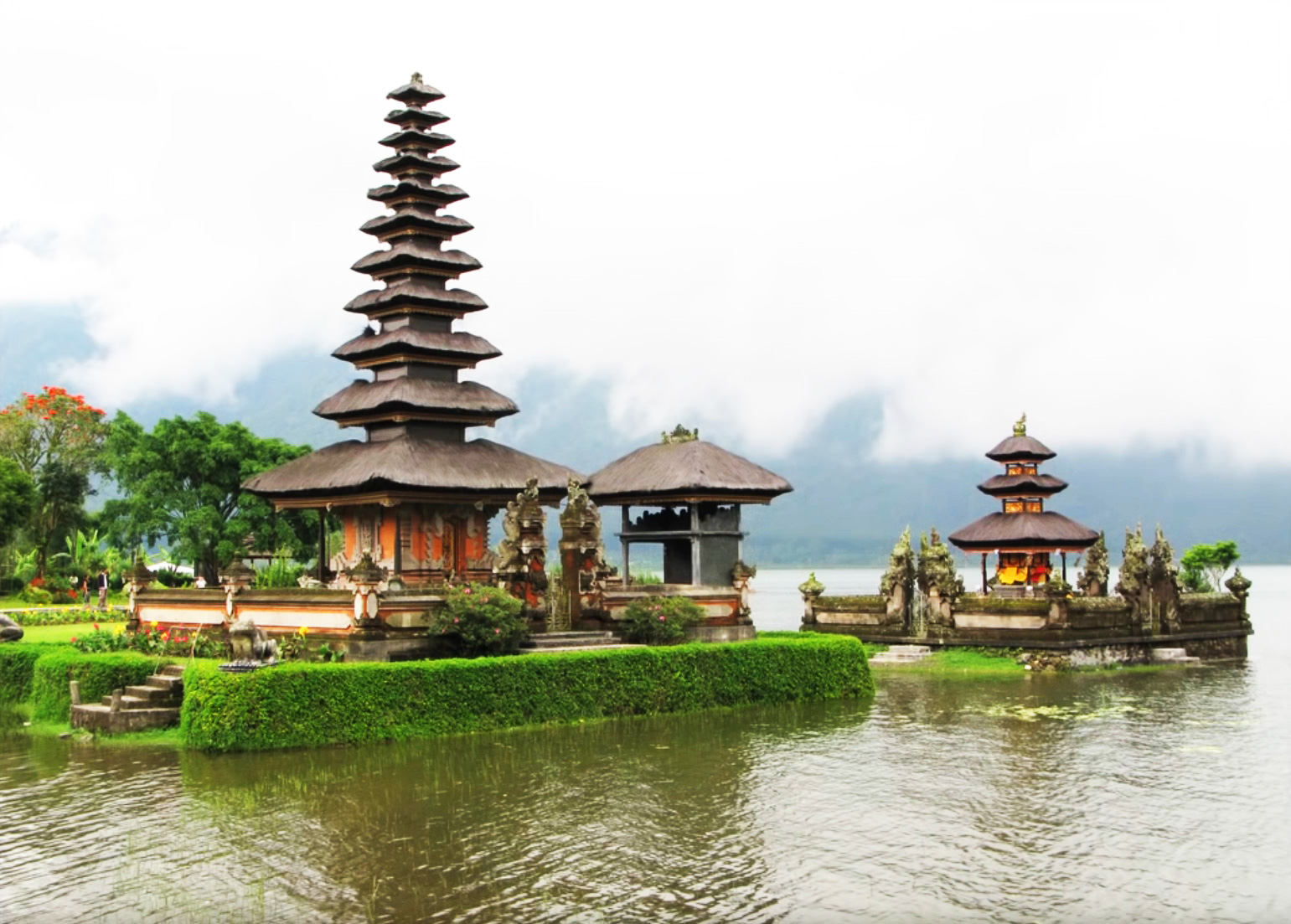
So when Lansing and his colleagues published their theories about Bali’s subak system in the academic literature, the green shoots of their ideas met a flood of scepticism. Much of the criticism circled around one unaddressed issue: how it all started. If the subak system really was a bottom-up, emergent phenomenon, how and why had it emerged in the first place—given that top-down hierarchies are such a feature of human societies in general, and Balinese Hindu culture in particular?
And in any case, there were some top-down elements in Lansing’s proposed set-up. Namely, the supreme water temple on Mount Batur. Perhaps the high temple priests were issuing irrigation instructions to the regional water temples below, and perhaps the regional priests—operating as a kind of spiritual-hydrological middle management—cascaded these instructions to their subak-level underlings further downstream. In short, the critics argued, it was entirely possible that proper inspection of the island would reveal a humming command-and-control irrigation bureaucracy.
Yet Lansing’s extensive research into practices at the local and regional water temples failed to find anything of the sort. While the temples facilitated information sharing and irrigation scheduling, there was no evidence that the priests ever told the farmers what to do. Meanwhile, his investigations of the supreme water temple on Mount Batur dispensed with the notion of an autocratic high priest or high temple bureaucracy orchestrating water flows from atop the volcano. It turned out that the Jero Gde exerted no formal authority over lower level temples, subaks, or individual farmers. Where the Jero Gde did wield considerable ‘soft power’ was in bestowing approval on the founding of new subaks, and in smoothing water-related disputes between existing subaks. The high priest’s primary means of resolving arguments was to appeal to the farmers’ sense of fairness, and their devotion to Dewi Danu. And Dewi Danu wanted everyone to share nicely.
It was still entirely possible that the autonomous aspects of the subak system were down to good design rather than spontaneous self-organisation. At some point in the distant past, an enlightened king or master engineer might have built the irrigation system and set it running according to a pre-ordained master plan. This made sense on an intuitive level—anyone inspecting the intricately-engineered irrigation works might be forgiven for rejecting the idea that it could all just happen by itself.
Yet historical records suggest otherwise. Until the Dutch colonised the island in the nineteenth century, and starting from about the same time as rice agriculture began one thousand years prior, Bali was ruled by a number of regional kings known as rajahs. Inscriptions and surviving written accounts from residents and visitors indicate that the rajahs took a hands-off approach to irrigation. While they readily encouraged expansion of rice cultivation on the island, and hence their tax base, there was no evidence that the aristocracy undertook any actual planning or construction. Everything was done by the subaks, for the subaks. When the Dutch conquered the island, they too left the subaks largely to their own devices for the same revenue-related reasons. Despite having their own ancient democratic community-led water management organisations back home in the Netherlands—the flood defence co-operatives known as ‘water boards’—the Dutch colonisers never grasped the networked, self-organising nature of the subaks under their nominal control. And when the new nation of Indonesia absorbed the island after World War 2, the Java-based central authorities maintained the same approach—until, that is, they implemented the Green Revolution.
In the late 1990s Lansing was able to gather field evidence to support his self-organising subak hypothesis. Drawing on earlier work by a Balinese archaeologist named Wayan Ardika, Lansing and an American archaeologist named Vernon Scarborough undertook a small-scale investigation of one of the earliest identified sites of inland agriculture on Bali—a depression based around two natural springs high on the side of Mount Batur, at a place named Sebatu. Ardika had found inscriptions and burial sites nearby indicating that rice cultivation had started sometime within the first millennium CE. In keeping with the subak pattern replicated across rural Bali today, the zone of cultivation centred around an ancient water temple built directly over the springs.
Careful mapping and analysis of soil cores in the area indicated that over the course of some five hundred years, the ancient farmers gradually extended the area of wet rice cultivation downstream by building an increasingly intricate system of tunnels, aqueducts, and canals. The system eventually reached several kilometres in length. The soil cores revealed that where newly built channels opened onto hillsides earmarked for rice production, irrigation flows carried volcanic sediments onto the slopes below. These sediments flattened the land in a spreading arc around the outlet, providing a level and nutrient-rich base for the new rice terraces. Wherever the underlying contours of the land permitted such sediment deposition, the cultivable area could be extended by small teams of farmers engaged in continuous trial-and-error microengineering—a gradual, incremental evolution.
Lansing and his colleagues concluded that what drove the process, at least in part, was Bali’s precipitous volcanic topography. The multiple ridges that splay out from the island’s peaks force water to flow downhill in numerous small rivers and streams. When the first farmers arrived in each steep-sided new valley, they had to tailor their rice cultivation and irrigation methods to these hyper-local hydrological conditions. Each group started out semi-isolated by the terrain, encouraging local development by local farmers. As these small irrigation cooperatives grew in both number and extent, they began to link up and apply their hard-learned cooperative methods to their dealings with each other. In this stepwise way the processes scaled up, and a comprehensive island-spanning system of emergent water management settled into its later form. Inscriptions show they adopted the ‘subak’ moniker from around the 11th century.
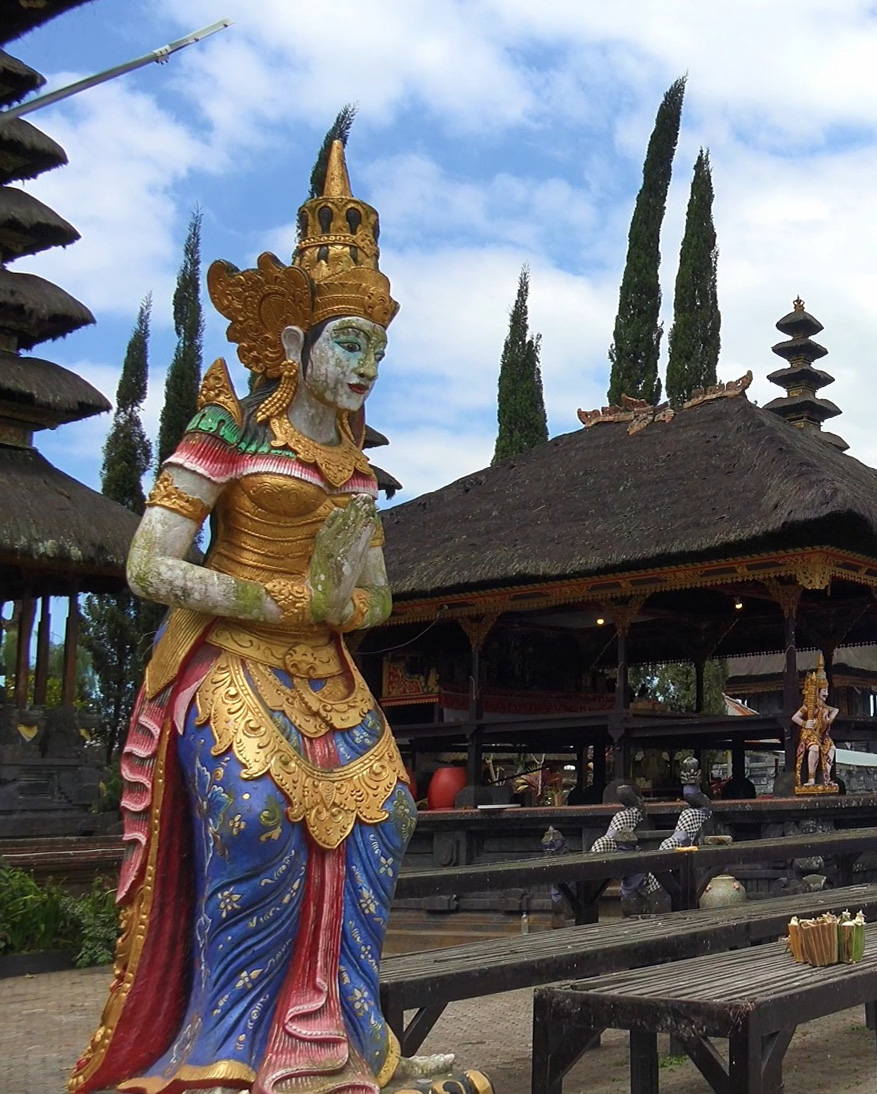
It remains unclear exactly how and when Dewi Danu and her priests stepped into the frame. But it is easy to speculate how the rituals, traditions, and guidance provided by the temples might reinforce the collaborative approach the system requires. Lansing’s later research indicates that there is something intrinsically fragile about how subaks function. As in all democracies, large and small, much about the successful operation of a subak depends on the political skills, personality, and integrity of its elected leader. Poor governance could place the smooth functioning of the subak—and ultimately farmers’ rice harvests and livelihoods—under threat. Still, if some subaks worked less well than others, or even became “failed subaks” for a time, the communities’ collective traditions usually asserted themselves sooner or later and cooperation was restored. And as long as only a few subaks struggled in this way at any one time within any one watershed, the irrigation network as a whole remained resilient.
From the late 1980s, Lansing and his team were gratified to see social and environmental stresses in rural Bali start to ease, as water temples resumed their role in coordinating irrigation. Cropping patterns again synchronised and de-synchronised from one growing season to the next according to environmental conditions and cues from neighbouring subaks, rather than diktats from central government or development agencies. Pesticide requirements in water temple-controlled subaks fell almost immediately—within a single growing cycle—with no loss of rice yields. Meanwhile, downstream farmers’ complaints about fluctuations in water supply dried up. Yet the picture is not entirely rosy. Use of artificial fertilisers continues to be widespread on Bali. The Indonesian oil and gas industry facilitates cheap fertiliser production, and many rice farmers see no reason not to try to boost their yields; particularly when high yield rice varieties remain dominant in most rice growing regions. Meanwhile, urbanisation and tourism-related development constitute a continued dual threat to the subak system, as they diminish the already constrained land area available on the island for rice cultivation, and tempt farmers away from subak life with the promise of better paid jobs in the towns and coastal resorts.
But an important lesson was learned. Ultimately Bali’s Green Revolution provided the sturdiest strand of evidence for the emergent, self-organising nature of the island’s rice growing landscape. The effect of Bali’s Massive Guidance program on the subak system was, Lansing realised, essentially the same as running the hill-climbing version of the computer model simulation in reverse. It turned out the Indonesian authorities were pre-emptively conducting their own extremely effective real-world verification of the Lansing-Kremer model of Balinese rice cultivation—albeit inadvertently, and at considerable cost to the Balinese people.
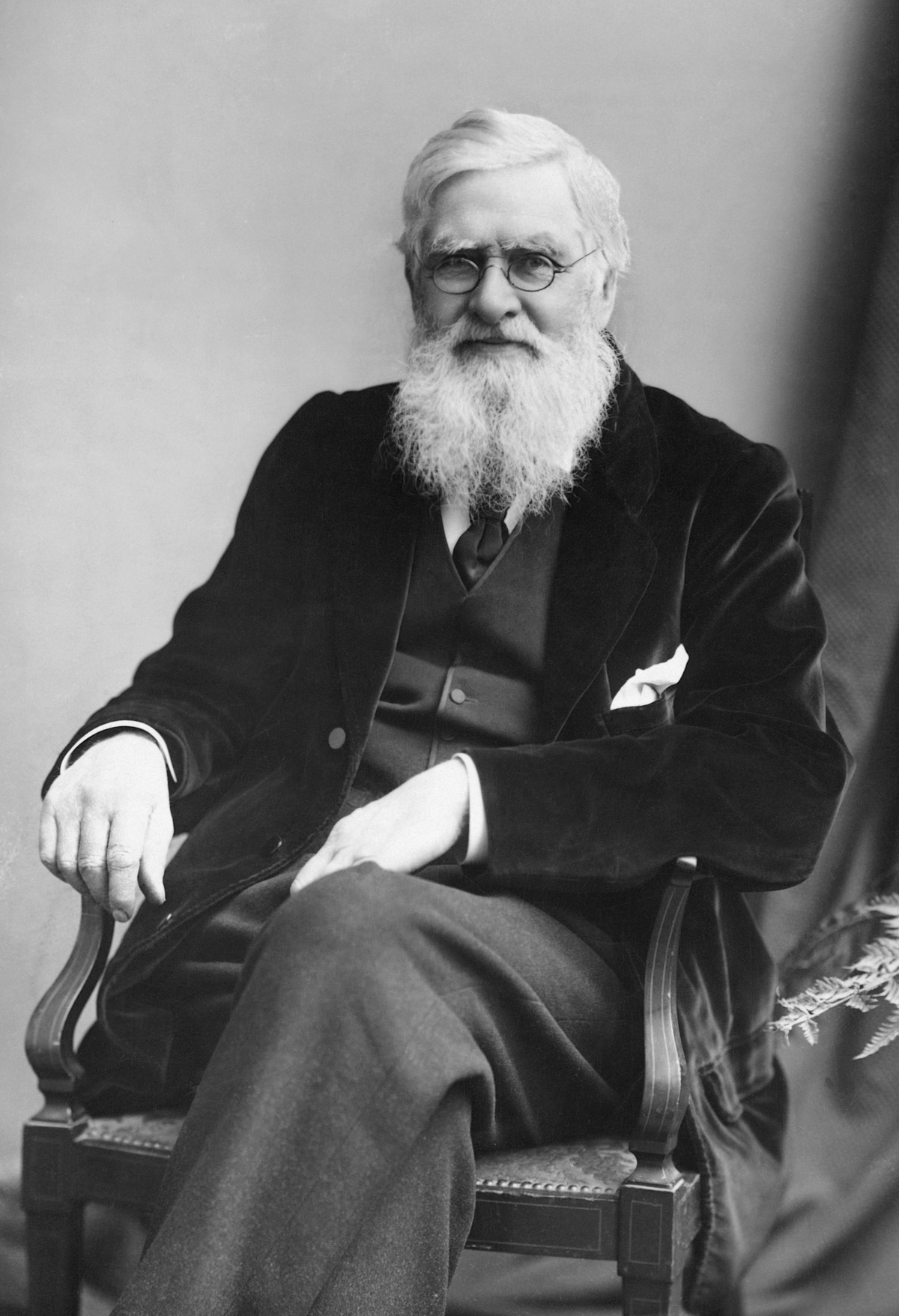
After the British naturalist Alfred Russel Wallace concluded his brief trip to Bali in 1856, he continued his travels through the Malay Archipelago. Two years later, he became unwell with malaria and was confined to a hut on the remote island of Ternate, east of Sulawesi. In the midst of a fever dream, he came to a realisation: species develop and change over the millenia because only the fittest individuals survive to pass on advantageous characteristics to their offspring. As soon as his fever broke, he outlined his idea in a letter and sent it to a fellow naturalist in England whom he greatly admired—a man named Charles Robert Darwin. Darwin had been struck by the same idea 20 years previously, but up to this point had only shared his speculations with his closest friends. Wallace’s letter gave Darwin a much-needed push, and in the summer of 1858 the two naturalists jointly published a composite paper of their writings entitled “On the tendency of Species to form Varieties.” Despite this underwhelming title, the paper contained all the key elements of what became the groundbreaking—and initially highly controversial—Theory of Evolution by Natural Selection. Today, both men are credited as co-discoverers of evolution, but after Darwin fleshed out the theory in his landmark On the Origin of Species the following year, Wallace’s role faded into the background of history.
Like species undergoing natural selection, complex adaptive systems iterate and adapt to changes in their surroundings. They adapt to their environment—and they shape their environment, too. Perhaps, in some intuitive way, Wallace recognised the subtle signatures of such processes when he gazed at Bali’s rice terraces during his short stay on the island. Even then, his mind must have been arranging and rearranging the lines of evidence that would coalesce into the momentous theory he and Darwin presented to the world two years later. Yet his musings on Bali’s exceptionally productive rice paddies remained nothing more. He never formulated a clear expression, never mind an explanation, of what was so special about the island’s landscape.
Today, complexity theory lacks the widespread recognition and application of its close evolutionary cousin, despite inheriting many of the same principles. Lansing and Kremer are confident that complex dynamics similar to those of Bali’s subak system will, in time, be revealed in other agricultural systems across the world—and, in all likelihood, in other types of social systems, too. In his own work, Lansing has uncovered similar ‘islands of order’ in the distribution of genetically distinct populations speaking different languages. And in 2017, he was one of a team of researchers proposing the use of satellite technology to screen for the presence of complex adaptive systems in landscapes around the world. When the team used satellite images to measure the overall areas of rice fields at each stage of cultivation, they found that the resulting spread of sizes follows a non-linear pattern known as a power law distribution. While power laws are hardly unique to complex adaptive systems, they function as an indicator of ‘connectedness’ within a frequency distribution—and so might signal the presence of such dynamics. To date, however, scientists have not conclusively identified subak-like adaptive dynamics in any other agricultural system. Meanwhile, researchers continue to explore the relevance of complexity theory to other fields of human endeavour, such as economics, healthcare, and politics.
The Balinese subak system’s unique status was recognised internationally in 2012, when the United Nations agency UNESCO placed it on their World Heritage List— an accolade awarded only to sites or landscapes of ‘outstanding universal value’. UNESCO’s listing describes the subak system as a manifestation of the centuries-old Balinese Tri Hita Karana philosophy, which identifies three components of human wellbeing: harmony of spirit, harmony of the human world, and harmony of the environment. This philosophy neatly lines up with the principal elements of the adaptive, self-regulating network Lansing and his team spent decades investigating: the facilitatory role of the water temples, the democratic human traditions of the subaks themselves, and the ecosystem dynamics of the landscape as a whole. In this way the World Heritage listing acknowledges that the Balinese people were aware of the shape, if not the detail, of Lansing’s findings all along—even if they initially lacked the capability to express them using differential equations within a computer simulation.
This might explain the reaction of the Jero Gde to the question about BaliMod’s usefulness—the priests readily acknowledged the relevance of the Lansing-Kremer subak irrigation model, because they recognised its consilience with their own understanding of the world. The Jero Gde’s reply betrayed the water temple priests’ preoccupation with reminding their farmer flock that “everything works together.” Indeed, the Jero Gde expressed an as-yet scientifically unverified extension to this belief during an informal meeting that took place some time after Lansing and Kremer first demonstrated their model at the supreme water temple. Kremer had expressed concern about their intrusion into the rituals and daily lives of the priests and the farmers, thinking they might be considered disrespectful in some way. “Jim,” the Jero Gde reassured him, “you don’t for a moment imagine that your participation in this project was by chance alone?”
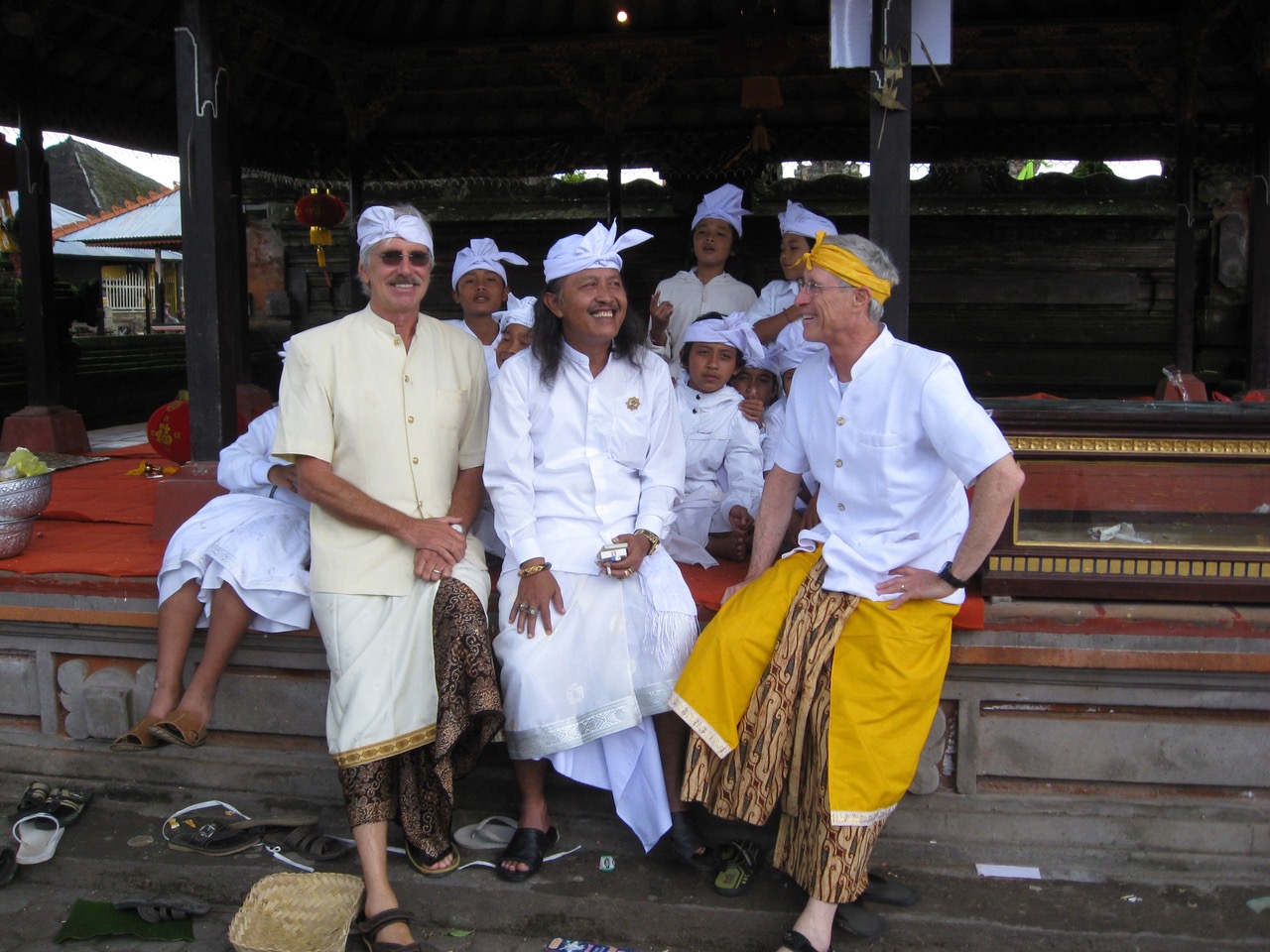
Perhaps part of the problem with self-organising systems—and part of the reason their dynamics are so hard to identify—is that they fade into the background when they function normally, becoming near-invisible to people living contentedly within them. Until, that is, something goes massively wrong. Some form of ‘higher’ knowledge of the system might indeed be useful in anticipating and avoiding such disasters. Priests and computer programs alike may have a role in avoiding the kind of outcomes described in that well-known Joni Mitchell song from 1970. After all, it’s much better to know what you’ve got before it’s gone.
© 2023 All Rights Reserved. Do not distribute or repurpose this work without written permission from the copyright holder(s).
Printed from https://www.damninteresting.com/the-ancient-order-of-bali/
Since you enjoyed our work enough to print it out, and read it clear to the end, would you consider donating a few dollars at https://www.damninteresting.com/donate ?

First?
Second. Amazing article, keep up the good work
Mr. Castle:
I am always in awe of those who can write extended yet interesting non-fiction. Excellent work.
Thanks, very interesting
Another great article by the DI team; thank you for your dedication to excellence!
Interesting indeed. I wonder whether Mr. Lansing has heard of the Water Tribunal of the plain of Valencia, in Spain: https://en.wikipedia.org/wiki/Water_Tribunal_of_the_plain_of_Valencia
I think it is not as complex as the Bali example, but it may well fit into his investigations of water sharing and managing. And who knows, perhaps it shows even emergent properties too!
Pardel, many thanks for that link – fascinating!
I don’t know if Stephen Lansing is aware of that particular institution but I’d certainly never heard of it. Though there are numerous examples of resource management institutions/systems, many water-related, dating back centuries, and in many parts of the world. And on the face of it, many seem to be good candidates for demonstrating emergent properties. The Dutch water boards mentioned in this (and a previous) DI article are another example. Such systems have been studied by numerous other researchers over the years – including of course the late Elinor Ostrom, the economist/political scientist who won a Nobel prize in 2009 for her research into common-pool resource management systems – aka ‘the Commons’.
As you suggest, it seems demonstrating the emergence – the complexity – is the hard bit: identifying the key parameters and functional relationships, mathematising them, and showing the resulting model outputs to be consistent with real world observations.
On the subject of stuff I omitted in the interests of avoiding article-bloat, the UN Food and Agriculture Organization website has a great list of ‘heritage agricultural systems’, many of which seem similarly good candidates. And in Asia, they often seem to involve irrigated, terraced rice fields. See the Dong Rice Fish Duck system for example:
https://www.fao.org/giahs/giahsaroundtheworld/designated-sites/asia-and-the-pacific/dongs-rice-fish-duck-system/en/
Thanks for a very interesting article. And any pest which attacks grains can certainly be called a “cereal offender”
Great Article as always!
This makes me think about microbiome interactions- certainly this article could pertain to all kinds of different scales, from the cellular to the national scale. Has anyone thought about applying the same sort of analysis to green revolution policies regionally themselves?
Very interesting article. I hope to circulate it among my farmer friends. Thank You!!!
Great article and writing.
Bravo! This is a great article and a great example of the best writing on this site. Thank you to Matt Castle and to DI for always showcasing high levels of knowledge, curiosity and damn good writing.